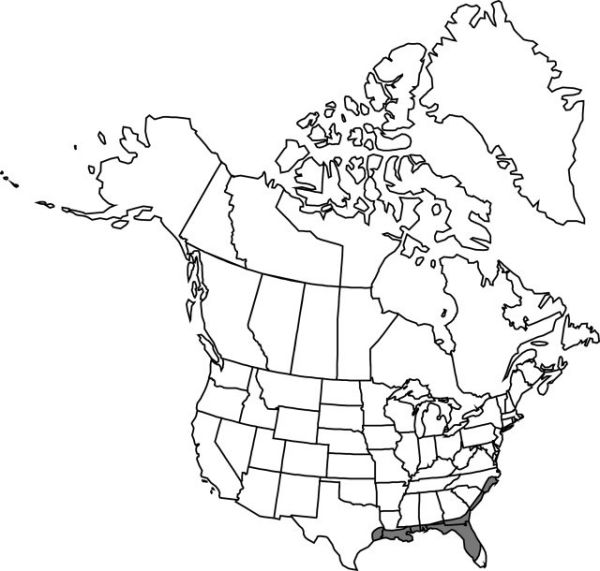Spiranthes floridana
Rhodora 38: 405. 1936.
Plants 7–40 cm. Roots few–numerous, spreading to descending, mostly to 0.5 cm diam., stout. Leaves usually persisting through anthesis, 3–5, basal, spreading, oval-oblanceolate, 2–6 × 1–2 cm. Spikes secund to loosely spiraled, 8–10 flowers per cycle of spiral; rachis glabrous to sparsely pubescent, trichomes commonly minute, abortive; any glands stalked, trichomes then capitate. Flowers creamy yellow to pale greenish yellow; sepals 5 × 1 mm, distinct to base, appressed; petals elliptic, slightly oblique, linear to lance-oblong, 5 × 1 mm, apex acute to obtuse; lip commonly yellow centrally, ovate to oblong, 5 × 2.5 mm, apex dilated, yellow and papillate-pubescent, its margin crisped, finely lacerate; veins several, branches very short; basal calli long-pointed, mostly to 1 mm; viscidium linear-lanceolate; ovary mostly 3 mm. Seeds monoembryonic.
Phenology: Flowering Feb–Apr.
Habitat: Dry to moist roadsides, fields
Elevation: 0–100 m
Distribution

Ala., Fla., Ga., La., Miss., N.C., S.C., Tex.
Discussion
Spiranthes floridana and S. brevilabris are often and easily confused, although the degree of pubescence is an excellent diagnostic tool in the field.
This species has become very uncommon, with only a single extant population known in 1998–2000.
Selected References
None.